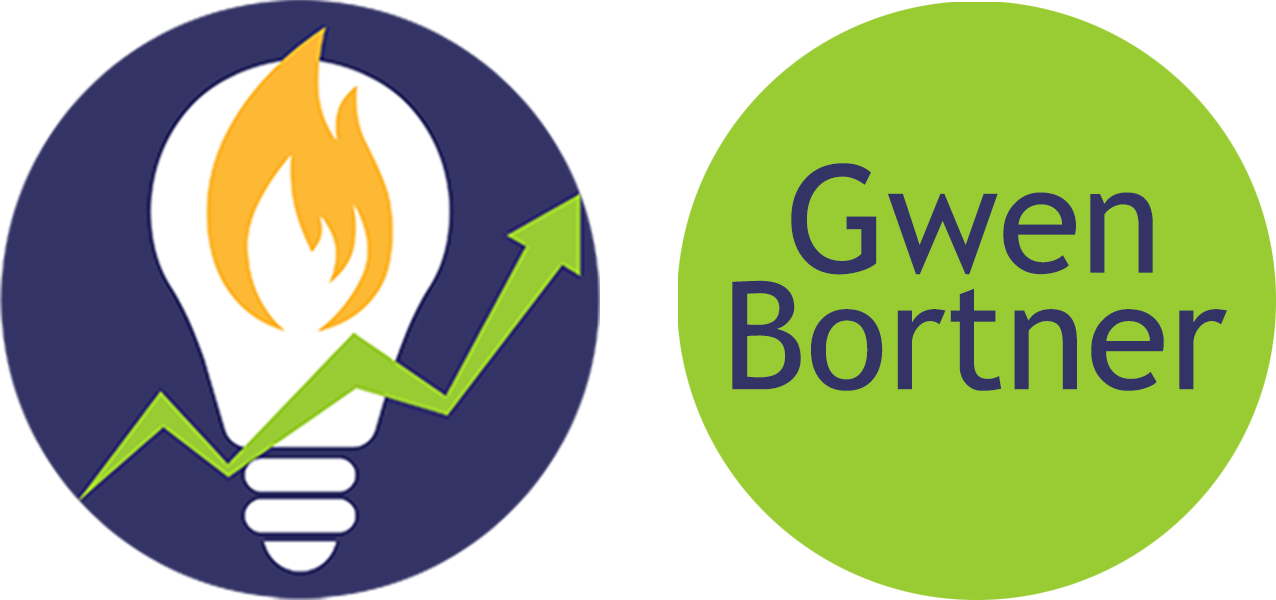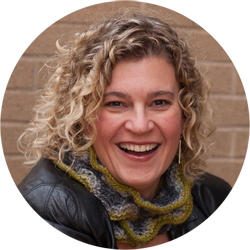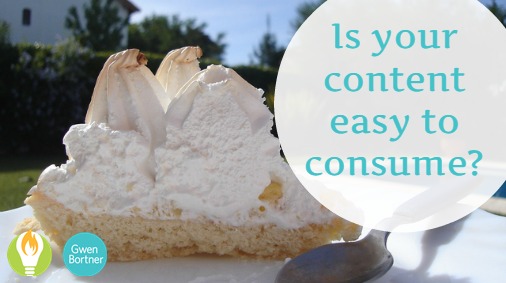
by Gwen Bortner | Tips & Tricks
Creating content is a valuable way to forge a connection with your customers and prospective customers. Having quality content on your website brings your customers back to your “home base” on a regular schedule, and communicates the idea that you are a trusted authority in your niche.
Have I convinced you yet that content is the key to building your business? Last week we talked about how to get the most out of one piece of content, and so this week I want to talk about streamlining that content for two reasons:
- Your customers will connect with your content more easily if it’s easy to consume and has a clear purpose.
- You will have an easier time writing the content if you have a clear plan before you begin.
What’s your purpose?
Before you begin to write any piece of content, you should think about your purpose in doing so. Is it…
- to entertain?
- to inform or educate?
- to sell something?
There’s a place for all of these purposes in the content plan for almost every business. Sometimes, it’s even good to combine them – after all, a dry piece of educational content isn’t nearly as fun to read as a witty, entertaining piece of content that also helps you learn something along the way, right? As another example, some of the best sales emails are written with educational content up front and a sales pitch at the end. Where you get into “content trouble” is not knowing what you’re trying to do with your content, or how you will use these three types of content individually or in pairs.
Before you create any piece of content, think first what you most want the customer to do when she finishes with the content, and use that as your overall purpose.
Dividing up the Content Pie
If you think of the content you put out into the world as a pie, how many slices are you devoting to sales content, vs. educational or entertaining content? The answer should be: “not many!” The purpose of a sales pitch is to offer a customer something right in the moment that he’s ready to buy it; but that customer has to have at least a few interactions with you before he’s ready to buy anything. Most people don’t just show up on your website and immediately purchase the first thing they see.
The amount of interaction required will vary with several factors, including:
- the cost of the item you’re selling
- the relationship you’ve built up in your industry
- the customer’s frustration level with his current situation
- your product’s likely ability to remove his frustration
Think of every piece of content you create as a way to build a relationship with someone who will eventually buy your products or services. How will you introduce that customer to you, your business, and your ability to solve his problems? Use your content to explain that!
Making a Call to Action
When you create content, you should have not only one purpose in mind, but also one action you want the customer to take. If you’re asking someone to click a link here to read a blog post, and then sign up over there for another list, and then find a download in this other place – that’s too many choices. Give your customer ONE thing to do, and it’s more likely that she’s actually going to do it.
Here are some sample calls to action you can make with a single piece of content:
- sign up for an email list
- download something (a free PDF or ebook or resource guide)
- click “like” or “share” or “retweet”
- forward the email to a friend
- hit reply and answer a question
- purchase something
So, to sum up: pick one focus, create plenty of opportunities for your customers to connect with you via content without selling them anything, and pick ONE call to action to bring your reader closer to being a buyer and lifelong fan. Not only will this process make it easier for you to create content, but it makes the content more likely to connect with your audience. It’s a win-win for everyone!
Did you find THIS content interesting or helpful? Share it with your friends & followers! Click the link to tweet this:
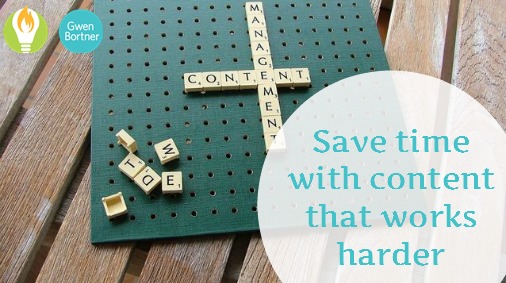
by Gwen Bortner | Marketing, Tips & Tricks
If you’re not a writer by trade, chances are good that when you think about creating quality content for your audience, you start to worry about how much time that’s going to take. While it should take some time to create quality content, the key is to maximize the time you’re spending and get the most out of the content, to make it worth the time it cost you.
Defining Content
For our purposes, the term “content” means,”any educational, entertaining, or inspiring piece of information you put out into the world for consumption by your audience.” A single piece of content could be one page or a 2-minute video, but it could also be a 300-page book or a week-long online course. The first step in maximizing the time you spend creating content is to understand that you don’t always have to go for the longer end of that spectrum; shorter pieces of content are more likely to hook your audience and keep their interest all the way through.
Types of Content
Content comes in as many forms as there are ways to communicate – written word, audio, video, and visual images all make up the spectrum of content formatting. The main types of content you can harness for your business include:
- newsletters/e-mail
- blog posts or website pages
- opt-ins (lead magnets)
- nontraditional content*
- paid content
If you learn how to make these different types of content work together, that’s the key to maximizing your time.
Tips for Maximizing Content
Create ONE main piece of content, and use it in a variety of ways to get the most out of it. For instance:
Scenario A: Maximizing Paid Content
Create a piece of paid content, such as an e-book or online course.
Now take one small section of that content (maybe a resource guide, or the first chapter or lesson) and make it into a lead magnet to get people on your email list.
Create a list of questions people have about this product before they buy, and turn each one of those questions into a blog post.
Take the most common question and turn it into a newsletter topic, really digging deep into your customers’ questions and explaining to them how this product can solve their problems. Then link to the blog posts you created to help answer other questions they may have.
Scenario B: Maximizing Free Content
Think about one big goal your customers have; now, create a series of regular, ongoing content to help them achieve that goal.*
Post this content series on your blog, for free.
In your regular newsletter, talk about the goals your customers have, and then let them know you’ve created this free content to help them achieve those goals.
Make an add-on resource to your free content, such as a workbook or a bonus video, and turn that into your lead magnet for your email list.
Create paid products or services that supplement the process of goal-reaching, for customers who want to go beyond the depth of the free content.
*Ideas for Nontraditional, Free Content:
- an audio or video podcast that breaks down the topic into easily-completed steps
- a social media challenge, such as posting a photo every day to Instagram
- a “mini course” or workshop with one new lesson each day for a week, month, etc.
- a book club, where members can come together to study topics that are interesting to them (Sound familiar?)
- a private online group (like a Facebook group or membership site) where they can come together to discuss their goals with people who are working on similar goals
- a _____-along (read-along, knit-along, quilt-along, de-clutter-along, etc.) – where everyone is doing basically the same thing at the same time and encouraging one another along the way
When you take the time to really plan out your content with a purpose, it becomes easier to see how you can present one piece of content in multiple formats to maximize the time you spent on it AND bring a cohesive theme to your online platforms.
Would you like to work on creating content that establishes you as an authority in your niche and lets you connect with your customers and earn their trust? Join us in June as we study Epic Content Marketing for the Small Biz Book Club!

by Gwen Bortner | Office Productivity, Tasks & Goals, Tips & Tricks
A planner and To Do list are great tools for helping us be more productive, but sometimes we need an extra boost to keep us focused.
I have learned that when a similar idea or concept pops up repeatedly in my life, that is a clue that I should be paying attention. When a friend talked about using a timer for productivity and then I heard about the Pomodoro Technique, I decided I should give this a try.
The Process
As with all good productivity hacks, the process is simple: set a timer for a predetermined time and work until the timer goes off. Then set a second timer for a much shorter length of time and take a break. Determining the “correct” length of time is the tricky part.
My friend Edie accidentally discovered her optimal time while working between loads of laundry. The length of her dryer cycle allowed her to get quite a bit of work done while the time folding the laundry gave her mind a break from the task she had been concentrating on. When it was done, she was ready to go again. Through this process, she discovered she could work on tasks that required deep concentration for more total productive hours in a day by breaking it up into smaller chunks.
Pomodoro Specifics
The Pomodoro technique works around 25 minute intervals, but ultimately, I think each of us will have a different amount of time that will maximize our effectiveness. For myself, I find 50 minutes on, 10 minutes off to work surprisingly well. This is how I implement the system:
- Because most of my work is done at the computer, I utilize an online timer at TimeAndDate.com.
- I set up two timers: one for my work (50 minutes) and one for my break (10 minutes), and set them to start in sequence.
- I pick a task from my task list (or several if I think I can get more than one complete), start the timer and work on them until the alarm sounds.
- Then I take a break — browse social media, refill my water, use the restroom — until the second alarm sounds.
- I repeat Steps 3 & 4 until my tasks are complete or my work is done!
Why it Works
Most of us can focus for longer periods of time, but by breaking our time into smaller chunks, we are able to stay fresher and more alert. It also allows us to put off the things that might normally distract us. If the next break is no more than X minutes away, we can wait until then to engage in the “distraction” activity.
Most importantly it gives us a focus for getting a task (or tasks) done in a limited period of time. It is very easy for work to expand to fill the time that is available! By keeping those boundaries smaller, we are more likely to be efficient in the work in which we are engaging. A perfect example is this post — done in one work cycle where otherwise it might take 2 hours or more!
Give it a Try
Honestly, I don’t use this technique all the time. But when I find it hard to get actively engaged or feel like my productivity is low, I turn to my timer. I was skeptical when I first heard of it and it took some tweaks to figure out the correct balance of work and break time for me, but in the end I know this discovery has allowed me to be more productive in many ways and at times that would have otherwise been lost to distraction.
Let us know your results: Give this technique a try for a day (if you don’t already) and share what turned out to be your best balance of work and break time.
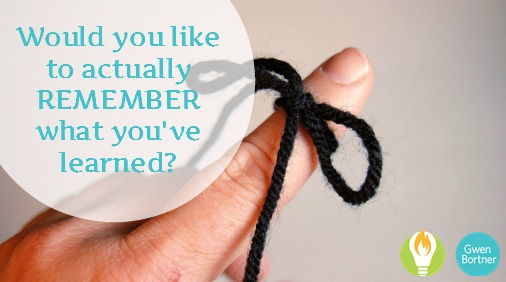
by Gwen Bortner | Tips & Tricks
Have you ever had that sensation that you know something, but you can’t quite access the information in your memory banks? We’ve all been there, and it can be super frustrating. If you’d like to improve the way you retain & recall information, keep reading for three useful tips.
Know yourself and which method works the best for you.
Look at your history and try to remember the times that were easiest for you to learn something new. Maybe you took a class and picked up the new technique right away, or you read a book and really understood the material without any additional help.
Take note of not only how you took in the information (was it a live class, a 1-on-1 conversation, or an independent study?), but the rest of the details as well, such as the time of day or the environment around you. Now, seek out new opportunities to learn in a similar environment and using a similar method.
Pro tip: It also depends on the type of knowledge you’re looking for – reading about how to ski is not going to be nearly as practical as actually getting on some skis, but if reading is how you learn best then you can still do some research ahead of time!
Apply the knowledge as soon as possible.
The sooner you make use of the knowledge you’ve gained, the more likely it is to “stick.” If you’ve learned a new technique or skill, go home and practice it after class. If you’ve read something interesting, write a blog post or journal entry about it. Even if it’s just a “fun fact,” you can apply it by finding opportunities to share it with two or three other people within a week!
Share it with others.
One of the best ways to become an expert at something is to teach it to others. Engage in discussion, teach someone else what you just learned, or tell your employees about what you’ve learned so they can help you apply it to your business. Find ways to share your knowledge and you’ll find it’s much easier to remember!
Do you want to get more out of the information you read in books? Join our Small Biz Book Club so you can get weekly updates, reading prompts, and questions and tips to actually apply what you’re reading and put it to work in YOUR small business!
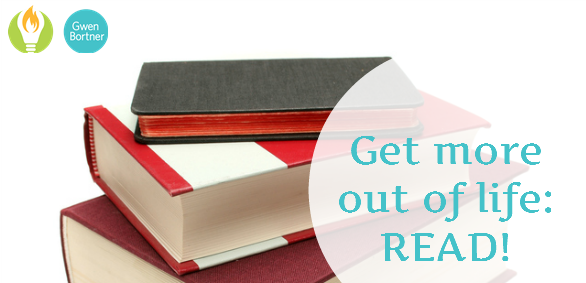
by Gwen Bortner | Tasks & Goals, Tips & Tricks
When you were a kid, there were probably several people in your life who encouraged you to read more: parents, teachers, librarians, etc. Now that you’re an adult, you have to make your own choices about how to spend your time (both leisure and working time), and you may find that you’re not making as much time for books as you once did. Today I hope to encourage you to reconsider.
Books are amazing little packages, full of information, entertainment, and sometimes even life-changing insights. Here are just 5 of the many reasons books are so incredible:
Reason #1: Books are Portable
You can take a book with you almost anywhere, which makes it easy to “sneak in” some reading time in your everyday life. If you always have a book handy, I think you’ll be surprised how much reading you can do in the time that might otherwise have been wasted. Here are just a few ideas: the waiting room at a doctor’s office, in line at the DMV, waiting for your kids to be finished with soccer practice (or insert some other activity of your choice), while the pot boils on the stove for dinner.
Action step: Put a book in your purse or car and see how much “sneaky reading” time you can accumulate this week!
Reason #2: Books are Inexpensive
You can find inexpensive books almost anywhere – local thrift stores, used book stores, and online sales sites. Of course, you can also find them for free at your local library or a little free library. For very little money you can gain hours of entertainment, insights for your business, and learn pretty much anything you’d ever want to know!
Action step: Go to your local library or a used book store and pick out a few titles that interest you!
Reason #3: Books Transcend Time and Space
Books are timeless – you can get as much out of a book that was written 100 years ago as you can from a book that was written this month. Though at times the information included in non-fiction books is outdated, they often have nuggets of wisdom that withstands the test of time. Books are a way to connect with our history and to carry on the stories of the past.
Action step: Add one book to your TBR pile that was written at least 50 years ago.
Reason #4: Books Have Multiple Uses
Want to learn to bake a cake? Change a tire? Build a website? Speak a foreign language? Would you like to experience the sensation of riding a dragon, slaying a wild beast, or getting your letter to Hogwarts? Books can do all this, and so much more! There are so many different types of books out there that you can have almost every possible experience within the pages of a book.
Action step: Add a book to your TBR pile that is a different genre than what you normally choose.
Reason #5: Books are Available in Multiple Formats
You no longer have to consider yourself “a reader” in order to enjoy books. Load your iPod up with audio books and enjoy them in the car on your commute, or pop in some ear buds and listen as you complete your weekly chores. Depending on the nature of your job, you might even be able to listen at work! Thanks to the magic of e-books, you no longer even have to leave your house in order to find a good book. You can download one instantly to your tablet or phone using your library’s website or a book selling site like Amazon. Books are literally now available at any time in almost any format – so what’s YOUR excuse for not reading more?
Action step: Try an audio book or e-book this week!
Would you like to not only read more books, but actually DO something with the knowledge you gain from them? Join us for the Small Biz Book Club, where every month I will translate the “big ideas” in popular business books into language that applies to you and your business, no matter the size. Enter your e-mail into the box to sign up.
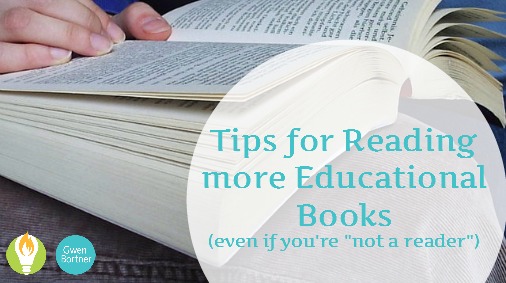
by Gwen Bortner | Tips & Tricks
I have often been described as “well-read” even though I am not actually a reader. Obviously, I know how to read, but I have never found it particularly enjoyable even though I do find it valuable.
However, because I don’t gravitate to reading naturally, I usually arrive at the end of the year thinking I probably should have read more business or educational books. This year I set a goal to read at least 4 non-fiction books a quarter. This quarter I actually “read” six books. The trick for me, as a non-reader, was to try a somewhat alternative approach.
(more…)

